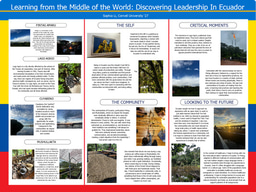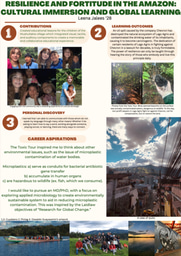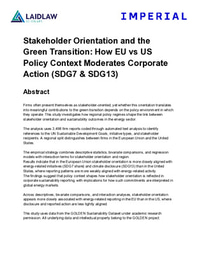Project Outline
Title: Threads of Resistance: Manufacturing Womanhood and Enclave Labor Organizing in NYC's Chinatown Garment Industry
Abstract
In 1982, more than 20,000 predominantly Chinese immigrant women garment workers marched through New York’s Chinatown to demand better wages, working conditions, and contract protections. Led by the International Ladies’ Garment Workers’ Union (ILGWU), the strike was one of the most successful labor actions in Asian American history. This project investigates how gender, ethnicity, class, and immigrant status shaped the organizing strategies that led to the strike’s success. It examines the role of transnational influences—including New Left movements and nation-building movement solidarities—that shaped the workers’ methods, despite linguistic divisions and workplace fragmentation.
The study’s central research questions include: (1) How did identity categories (gender, class, ethnicity, immigrant status) influence organizing strategies? (2) What transnational or comparative labor histories shaped mobilization strategies? (3) What lessons from the 1982 strike might inform contemporary labor organizing among immigrant women?
Methodologically, this research draws on oral history interviews (in English, Mandarin, and Cantonese), archival records from ILGWU and the Museum of Chinese in America, and comparative historical analysis of parallel labor movements like the earlier Jung Sai Strike in San Francisco. Feminist and transnational labor frameworks will guide analysis.
By centering immigrant women’s leadership, this study contributes to broader discussions in ethnic studies, labor history, and gender studies. It offers insight into how marginalized actors can challenge dominant narratives and build durable collective power across lines of difference.
Research Objectives & Questions
Primary Objective:
To explore how gender, immigrant identity, and transnational political networks shaped the organizing strategies and outcomes of the 1982 Chinatown Garment Strike.
Secondary Objectives:
-
To trace comparative examples of Asian immigrant women’s labor organizing across time and place.
-
To assess how Cold War politics and revolutionary frameworks influenced strike leadership.
-
To examine how this movement challenged male-dominated labor institutions.
Key Research Questions:
-
How did gender, ethnicity, class, and immigrant status shape the organizing strategies of the 1982 strike?
-
In what ways did transnational influences—from New Left, anti-imperialist, or Asian labor movements—shape their political imagination and tactics?
-
What explains the strike’s unusual success given the historic marginalization of these women in both ethnic communities and union structures?
Background / Literature Review
Asian American labor history remains an underexplored subfield, historically sidelined by both traditional labor studies and ethnic studies. However, scholars like Xiaolan Bao (Holding Up More Than Half the Sky), Margaret Chin, Mae Ngai, and Katie Quan have foregrounded the significance of Chinese American garment workers in shaping labor activism and feminist organizing. Bao’s call to transcend national borders in labor history influences this project’s emphasis on comparative, cross-border resistance.
While existing scholarship often treats the 1982 strike as a localized moment, this research draws connections to the global context: from the trans-Pacific labor consciousness fostered by 1960s–70s Asian American activists, to the influence of socialist women’s movements across China and Southeast Asia.
Methodology
This project will employ a qualitative, mixed-methods approach grounded in oral history, archival research, and transnational comparative analysis. I will draw from oral history interviews—conducted in English, Mandarin, and Cantonese—housed at institutions like the Museum of Chinese in America and We Are One Labor Arts. These narratives will help reconstruct the personal, affective, and collective strategies used by striking women.
Archival materials—including union records, internal communications, and ethnic press coverage—will be drawn from the ILGWU Digital Archive and the Kheel Center at Cornell University. I will contextualize the 1982 strike by comparing it with similar movements: the Jung Sai Strike and labor organizing efforts by the Chinese Progressive Association in San Francisco decades earlier.
Potential Impact
This research contributes to multiple intersecting fields—Asian American studies, labor history, feminist studies, and transnational politics. It not only recovers a vital moment of working-class immigrant resistance but also foregrounds how women of color led effective labor campaigns despite systemic marginalization. By bridging localized organizing with global currents of resistance, the project challenges the often nationalist framing of labor history. Its insights are timely in light of renewed interest in immigrant labor rights and women-led organizing in the American labor landscape.
Practically, the study aims to inform ongoing labor justice efforts in immigrant communities and shape how unions, policymakers, and educators understand the enduring legacies of these movements.
Resources & Support Needed
I would benefit from mentorship in feminist and Asian American labor history, particularly from scholars with experience in oral history or archival analysis. Language support for Mandarin and Cantonese interview transcription would also be helpful. Access to archives (e.g., Kheel Center, MOCA) and institutional support for travel or digitization will be crucial for collecting comprehensive data. Collaboration opportunities with community-based organizations like the Chinese Progressive Association could enrich the project and offer space for public-facing storytelling.
Bibliography
Asian American Writers’ Workshop. “How Chinese American Women Changed U.S. Labor History,” September 1, 2022. https://aaww.org/chinatown-garment-strike-1982/.
Bao, Xiaolan. Holding Up More Than Half the Sky: Chinese Women Garment Workers in New York City, 1948-92. University of Illinois Press, 2001. http://www.jstor.org/stable/10.5406/jj.12166951.
Benin, Leigh David. The New Labor Radicalism and New York City's Garment Industry: Progressive Labor Insurgents in the 1960s. New York: Garland, 2000.
Certo, Peter. “Manufacturing Illegality: An Interview With Mae Ngai - FPIF.” Foreign Policy in Focus, February 17, 2021. https://fpif.org/manufacturing-illegality-an-interview-with-mae-ngai/.
Chao, Eveline. “How Asian-American Radicals Brought ‘Yellow Power’ to Chinatown.” Gothamist, October 29, 2016. https://gothamist.com/news/how-asian-american-radicals-brought-yellow- power-to-chinatown#photo-1.
Chang, Rachel. “When 20,000 Asian Americans Demanded Garment Workers’ Rights—And Won.” HISTORY, April 23, 2024. https://www.history.com/news/garment-workers-strike-chinatown.
Chin, Margaret May. Sewing Women: Immigrants and the New York City Garment Industry. New York: Columbia University Press, 2005.
Dong, Harvey. “Jung Sai Garment Workers Strike of 1974: ‘An Earth-Shattering and Heaven-Startling Event.’” In Ten Years that Shook the City: San Francisco 1968–1978, edited by Chris Carlsson and Lisa Ruth Elliott, 303–16. San Francisco: City Lights Books, 2011.
“ILGWU Archives,” Industrial and Labor Relations (ILR) School, Cornell University, https://ilgwu.ilr.cornell.edu/archives/.
Joseph, Alex. “Women Workers in NYC’s Garment District Deserve Better, These Speakers Say.” FIT Newsroom, March 25, 2024. https://news.fitnyc.edu/2024/03/25/women-workers-in-nycs- garment-district-deserve-better-these-speakers-say/.
Kessler-Harris, Alice. Out to Work: A History of Wage-Earning Women in the United States. New York: Oxford University Press, 1982.
Lan, Dean. "The Chinatown Sweatshops, Oppression and an Alternative." Amerasia Journal. 3.1 (1971): 40-57.
“Museum of Chinese in America -- Oral History Archive,” n.d. https://ohms.mocanyc.org/interviews.php?Subjects=Immigration+and+society.
NBC News. “40 Years Later, Labor Leaders Remember NYC Chinatown’s Garment Worker Strike,” May 15, 2022. https://www.nbcnews.com/news/asian-america/40-years-later-labor-leaders- remember-nyc-chinatowns-garment-worker-st-rcna25469.
Ngai, Mae M. Impossible Subjects : Illegal Aliens and the Making of Modern America. Princeton, N.J. :Princeton University Press, 2004.
Quan, Katie. "Memories of the 1982 ILGWU Strike in New York Chinatown: A Personal Essay." Amerasia Journal 35, no. 1 (2009): 112–19. https://laborcenter.berkeley.edu/pdf/2009/quan_amerasia09.pdf.
Rabinowitz, Ted. “Mae Ngai Provides Critical Context for the History of Immigration and Labor in U.S.” Columbia News, July 1, 2014. https://news.columbia.edu/news/mae-ngai-provides-critical- context-history-immigration-and-labor-us.
UC Berkeley Labor Center. “Memories of the 1982 ILGWU Strike in New York Chinatown - UC Berkeley Labor Center,” June 26, 2024. https://laborcenter.berkeley.edu/memories-of-the-1982-ilgwu- strike-in-new-york-chinatown/.
Unity Newspaper. Vol. 5, no. 19 (December 10, 1982).
“We Are One | the 1982 Garment Workers Strike in Chinatown | Labor Arts,” n.d. https://www.laborarts.org/exhibits/we-are-one/.





Please sign in
If you are a registered user on Laidlaw Scholars Network, please sign in